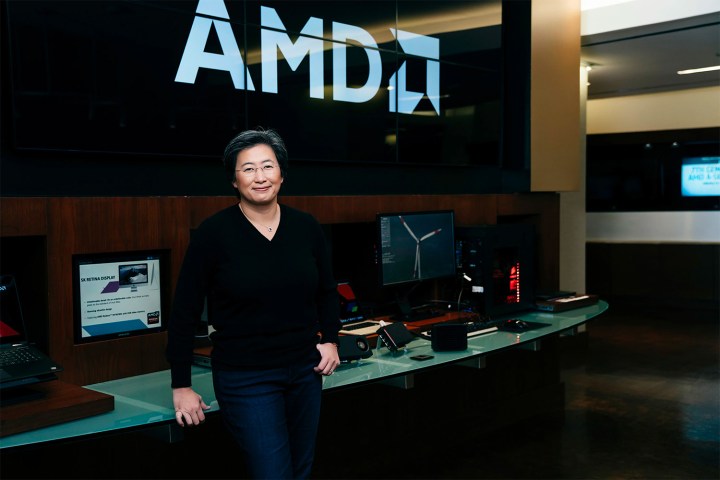
AMD’s CEO, Dr. Lisa Su, strode out confidently to deliver the company’s first CES keynote address. Held on Wednesday, January 9, it came later in the show than its competitors’ conferences. Yet that didn’t take the edge of the anticipation felt by AMD’s fans, nor did it seem to shrink the size of the crowd.
Her confidence remained in a press roundtable held later that same day. Predictably, the conversation started at ray tracing. The headline feature of Nvidia’s new RTX 20-series cards gives the green team a new capability not found on any AMD graphics card. Yet, that doesn’t seem to bother Dr. Lisa Su.
“We are deep in development,” she told reporters, “and that development is concurrent between hardware and software. That’s key.”
For Su, this comes back to AMD’s overall strategy of delivering features only when they make a real impact for consumers. “The consumer doesn’t see a lot of benefit today […]” Su said. “I think by the time we talk more about
Her response gently pokes at Nvidia’s launch of
Going back and forth on G-Sync and FreeSync
More CES 2019 coverage
- Intel gets sneaky with new 9th-gen desktop CPUs without dedicated graphics
- Oculus’ Quest is the headset that will make me (and you) a VR believer
- The 5 best laptops of CES 2019
Dr. Lisa Su, however, seems sure that AMD has won the war. “We’ve known FreeSync is the right answer for a couple of years,” she said. “The fact that others have now decided that FreeSync is a good answer, means we made the right choice a few years ago.”
When pressed about Nvidia’s quality claims, Su pointed out that varying quality also comes with varying price points, including budget options. “The way we look at it is, there’s a whole host of TVs and monitors out there, over 550, at different price points. […] You will get the experience you pay for. I don’t actually see a problem with it.”
Ryzen’s 3rd generation will get more than eight cores

AMD teased its third-generation Ryzen processor during its CES 2019 keynote. While not ready to provide many specifics, a Cinebench benchmark was shown, pitting an eight-core Ryzen 3rd-gen against an Intel Core i9-9900K.
When asked if this meant Ryzen would stay at eight cores, Lisa Su said the demo was meant only as a like-for-like comparison.
“If you look at the evolution of Ryzen, we’ve always had the advantage of core count,” she said. “Some people may have noticed on the package that there’s some extra room. So, there is some extra room on that package, and you might expect we’ll have more than eight cores.
Still, as the Cinebench benchmark showed, the pursuit of more cores doesn’t mean AMD is only concerned with multi-core performance. “[…] we know how important single threaded performance is, so you will see us push single threaded performance. But I’m not making any prediction,” said Dr. Lisa Su.
Radeon VII arrives now, but we’ll see more of Navi in 2019
AMD’s keynote announced the new Radeon VII video card, priced at $699 and arriving February 7. That left some wondering about Vega’s successor, known as Navi.
“You will hear more about Navi in 2019,” said Dr. Lisa Su. “It’s a very active graphics cycle for us.”



